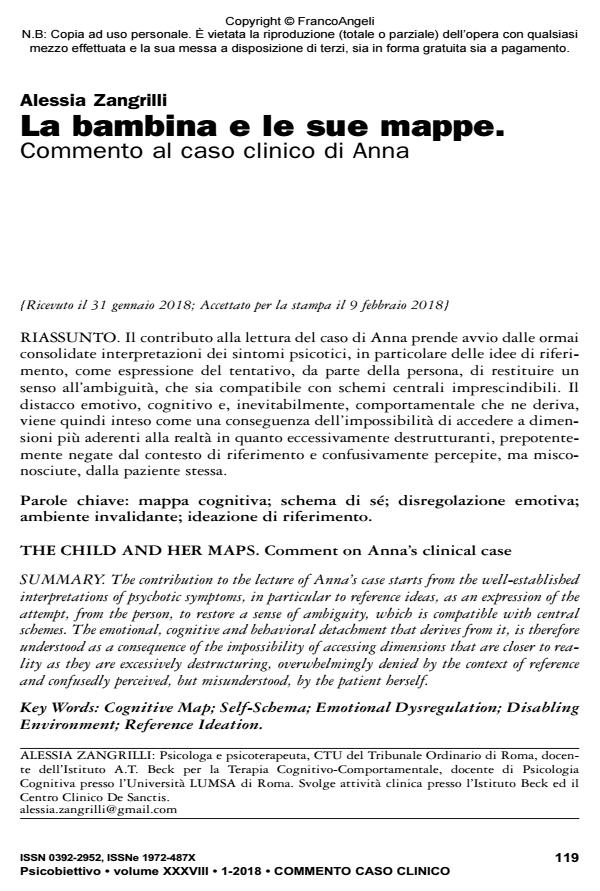The child and her maps. Comment on Anna’s clinical case
Journal title PSICOBIETTIVO
Author/s Alessia Zangrilli
Publishing Year 2018 Issue 2018/1
Language Italian Pages 6 P. 119-124 File size 92 KB
DOI 10.3280/PSOB2018-001008
DOI is like a bar code for intellectual property: to have more infomation
click here
Below, you can see the article first page
If you want to buy this article in PDF format, you can do it, following the instructions to buy download credits

FrancoAngeli is member of Publishers International Linking Association, Inc (PILA), a not-for-profit association which run the CrossRef service enabling links to and from online scholarly content.
The contribution to the lecture of Anna’s case starts from the well-established interpretations of psychotic symptoms, in particular to reference ideas, as an expression of the attempt, from the person, to restore a sense of ambiguity, which is compatible with central schemes. The emotional, cognitive and behavioral detachment that derives from it, is therefore understood as a consequence of the impossibility of accessing dimensions that are closer to reality as they are excessively destructuring, overwhelmingly denied by the context of reference and confusedly perceived, but misunderstood, by the patient herself.
Keywords: Cognitive Map; Self-Schema; Emotional Dysregulation; Disabling Environment; Reference Ideation.
Alessia Zangrilli, La bambina e le sue mappe. Commento al caso clinico di Anna in "PSICOBIETTIVO" 1/2018, pp 119-124, DOI: 10.3280/PSOB2018-001008